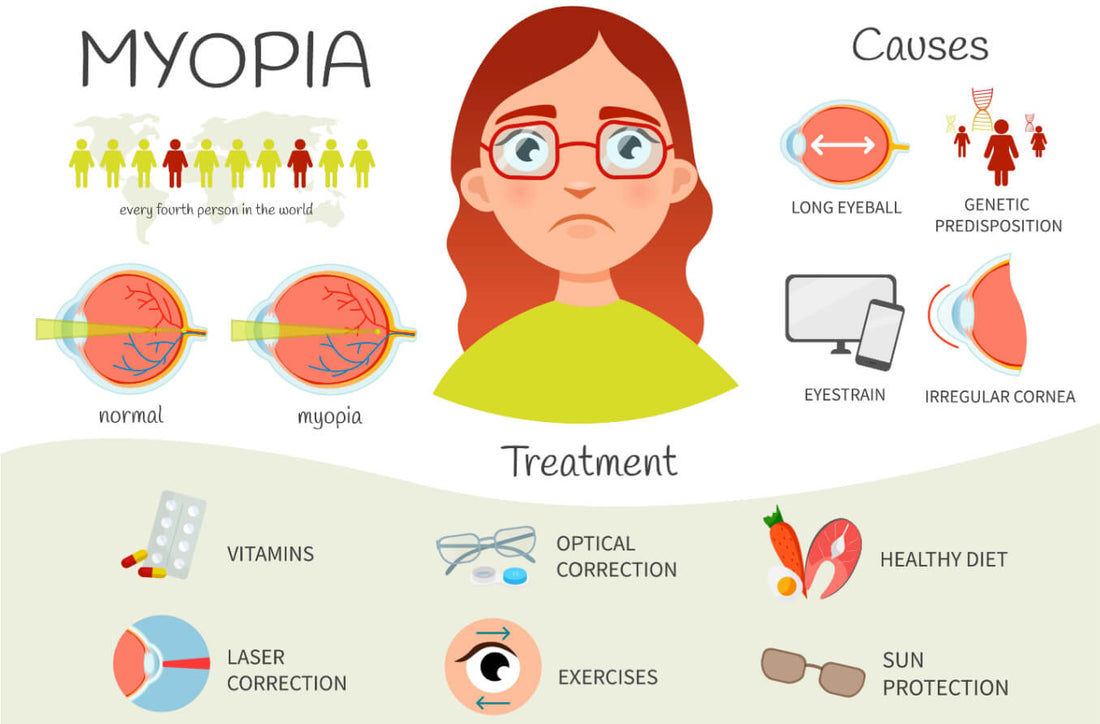
How much do you know about myopia
What is Myopia?
Myopia causes blurred vision for far distance objects, but as myopia increases, the blur can start to be noticed even at arm's length or closer. It is also known as short-sightedness or near-sightedness.
Myopia typically starts developing before age 10, and then progresses or worsens every few to several months in children and teenagers. It is caused by the eyes growing too quickly and too long for the normal rate of eye growth. In children, the eyes are meant to grow steadily until the teenage years, then stabilize. In myopia, though, the eyes grow too quickly leading to rapid and continual deterioration of vision and continued eye growth through the teenage years and even in early adulthood.This ongoing deterioration is called myopia progression.
Myopia has traditionally been corrected by spectacles (glasses) or contact lenses, which fix the focus of the eye to create clear vision while they are worn, but do not fix the myopia. This simple correction option - single vision glasses or contact lenses - have been found to offer no protection against myopia progression.
Myopia control is about protecting eye health
Myopia in children and teens may just seem like it's just about needing a pair of glasses. However, as childhood myopia worsens, the eye is growing at an accelerated rate. The eyes are meant to grow in childhood, at a regular rate up until age 10 to 12. However if they grow too quickly or don’t stop at age 10 to 12, then a child becomes myopic.
This excessive growth of the eye stretches the retina – the light sensitive layer lining the back of the eye – and the stretching increases risk of eye diseases and vision impairment occurring across your child’s lifetime.

A myopic eye is longer, or more stretched, than a normally sighted eye due to excessive eye growth.
A normal eye length is 22 to 24mm. When the eye grows to longer than 26mm, the risk of your child suffering vision impairment in their lifetime is 25%. If the eye grows to more than 30mm, which can occur in very high myopia, the risk skyrockets to 90%.
Myopia control is about slowing down this excessive eye growth, ideally to the normal rate expected in childhood. Even at levels of myopia traditionally thought of as quite ‘low’, there are increased risks of eye diseases compared to someone who is not myopic – see the table below.

A table showing the increased risk of eye diseases with higher levels of myopia. The risk of these eye diseases for someone who is not myopic is ‘1’ – these are odds ratios, indicating the multiple of increased risk for that eye disease by the level of myopia. For example, a -1.00D myope has a 2.1x increased risk of cataract and a 3.1 x increased risk of retinal detachment compared to someone who is not myopic.